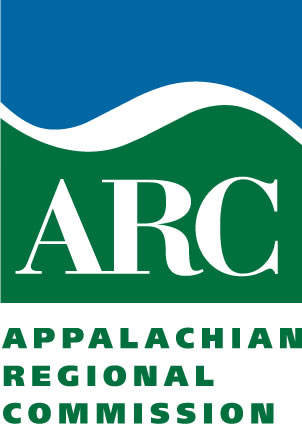 The Appalachian Regional Commission (ARC) is offering funding through the POWER initiative for economic revitalization. You can read more about the program here.
The Appalachian Regional Commission (ARC) is offering funding through the POWER initiative for economic revitalization. You can read more about the program here.
Timing
ARC has a two-phase review process for proposals/applications submitted. It is strongly advised that you get your initial application submitted in May, 2016. technically, there are no submission deadlines as proposals and applications are accepted on an ongoing basis, but there is no guarantee funds will be available if your region waits too long.
Eligibility
Applicants for ARC funding must serve and benefit a portion of the Appalachian Region as defined by the Appalachian Regional Development Act of 1965, as amended. The Appalachian Region includes counties in Alabama, Georgia, Kentucky, Maryland, Mississippi, New York, North Carolina, Ohio, Pennsylvania, South Carolina, Tennessee, Virginia, and all of the State of West Virginia. Click here to see a list of Appalachian Region counties. You are able to submit projects that serve communities both within and outside of the Appalachian region, but only the portion your project that serves the Appalachian region will be eligible for funding. These include local development districts, state, county, city, or other political subdivision of a State, local government engaged in economic or infrastructure development activities, public or private non-profit organizations or associations, etc.
Matching Funds
Eligibility and considerations for funding:
- If there is a distressed county in a project and
- At least half of the counties are distressed, the project may be funded at up to 80%of project costs;
- At least half of the counties are some combination of distressed and at-risk, ARC assistance can be the higher of 70% of project costs or the average percentage applicable to the various counties in the project
- Fewer than half the counties are distressed, ARC assistance can be the higher of 50% of project costs or the average percentage applicable to the various counties in the project
- If there is no competitive county or attainment county in a project, and at least half the counties are at-risk, the project may be funded at up to 70 percent of project costs.
- All other multi-county projects shall be funded at the average percentage applicable to the various counties in the project (i.e., 80 percent, 70 percent, 50 percent, 30 percent, or 0 percent); except that the portion of a project that is attributable to an attainment county in a project that does not include a distressed county shall be considered ineligible for ARC assistance and may not be considered for matching purposes.
ARC Award
Total Funding Amount: $45,000,000
Estimated Award Ceiling: $1,500,000
Estimated Award Floor: $500,000
Project Period
36 months
Funding Description
ARC has identified five strategic investment goals to advance its vision and mission and to guide its work over the next five years. These goals reflect consensus among local, state, and federal partners on the most critical investment opportunities in Appalachia. While the investment goals are distinct, they are also interdependent, with progress on one goal often requiring investment in another.
Goal 1, Economic Opportunities
Invest in entrepreneurial and business development strategies that strengthen Appalachia’s economy.
Goal 2, Ready Workforce
Improve the education, knowledge, skills, and health of residents to work and succeed in Appalachia.
Goal 3, Critical Infrastructure
Invest in critical infrastructure—especially broadband; transportation, including the Appalachian Development Highway System; and water/wastewater systems.
Goal 4, Natural and Cultural Assets
Strengthen Appalachia’s community and economic development potential by leveraging the Region’s natural and cultural heritage assets.
Goal 5, Leadership and Community Capacity
Build the capacity and skills of current and next‐ generation leaders and organizations to innovate, collaborate, and advance community and economic development.
Funding Preferences
In order to maximize the impact of ARC investments on the economic transition in coal-impacted communities, ARC will give preference to investments under this FFO that successfully address the following factors:
- Regional Focus – Targeted areas should be regional, defined minimally as multi-county, with potential investment amounts scaled upward as the size and complexity of the region increases to include multi-state areas.
- Large-Scale Projects – To maximize impact and minimize administration costs, projects should be large in scope with budgets that, in many cases, are expected to range from $500,000 to $1.5 million.
- Include Assessment and Planning – Communities receiving money for activities should have a well-articulated analysis of why and how the local and regional economy has been negatively impacted by the downturn in the coal industry and demonstrate how the proposed effort adds value to a larger, more long-term vision and action plan being implemented in the Region (e.g., alignment with Comprehensive Economic Development Strategies (CEDS) and other regional strategic plans).
- Targeted to Economic Restructuring – Communities must have assessed their assets and opportunities and have formulated a plan that focuses on restructuring the economy (e.g. sector strategies, entrepreneurial development) and identifies both short-term (1-2 years) and long- term (3 years and beyond) anticipated outcomes.
- Collaborative – Investments should have multiple stakeholders engaged in project implementation from the private, public, and nonprofit sectors, and from multiple disciplines; there should be evidence of strong input and engagement of the broader community in planning and project design.
- Evidence of Leverage – Investments should demonstrate community and regional commitment to the proposed project by combining ARC resources with other public, private, and philanthropic resources.
- Outcome-driven – Communities should define specific output and outcome measures, demonstrate how the project is designed to achieve those outcomes, and commit to capturing and sharing those measures over the life of the investment. Given the urgency in addressing needs in coal-impacted communities and regions, anticipated outcomes for both the short- and long-term should be clearly articulated.



